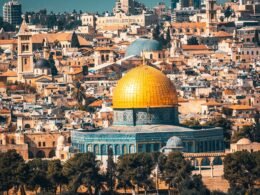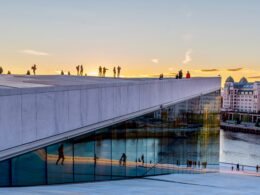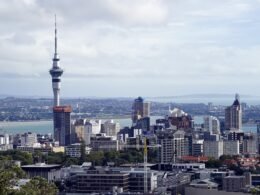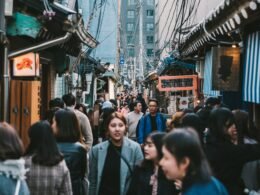South America is a continent full of diverse regions. While it isn’t possible to do everything in just a month, we’ve put together an itinerary that allows you to enjoy some of the best South America has to offer.

If you’re looking to enjoy rich culture, outdoor adventures, and vibrant cities, this is how to spend one month in South America visiting everything from rainforests to Machu Picchu.
Rio de Janeiro (Days 1-6)
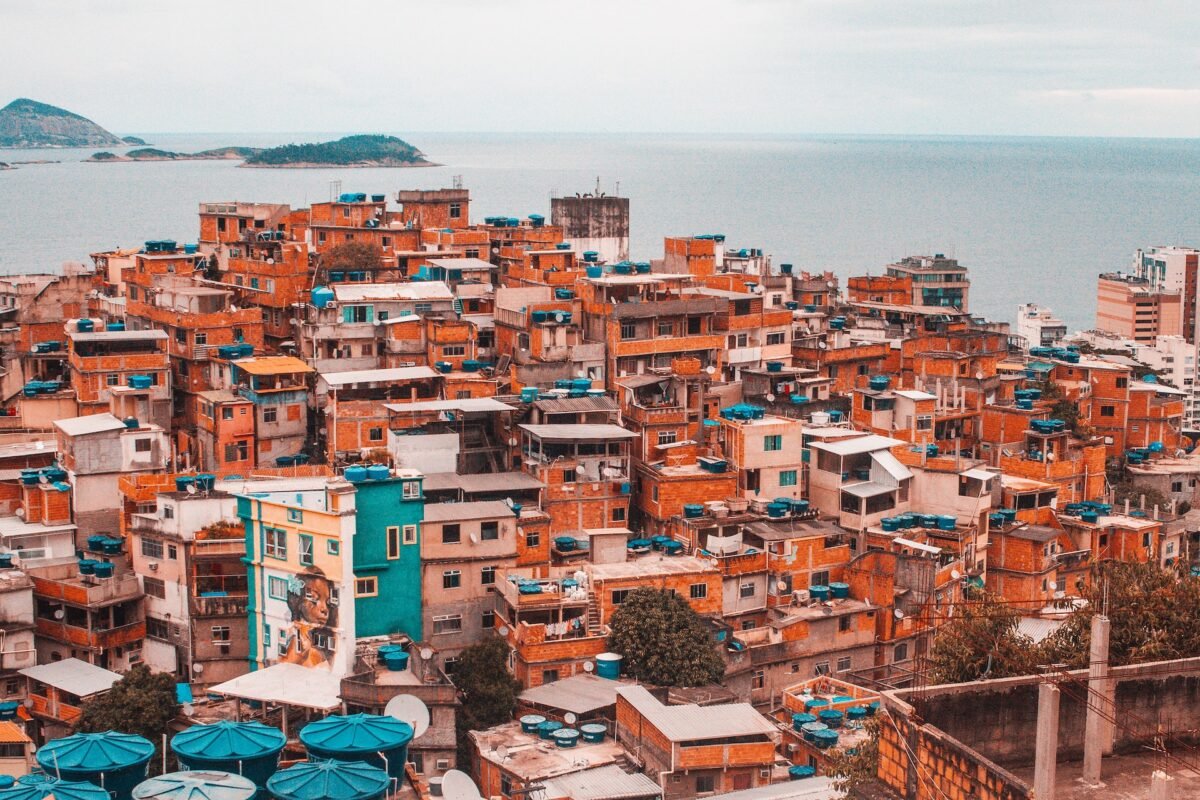
Brazil’s 2nd largest city is a place unlike any other. The seaside city is famous for its sandy beaches, street parties, bustling nightlife, and idyllic weather. Rio de Janeiro is enormous, and you could spend an entire month just exploring the city. However, you can just visit the highlights, leaving yourself plenty of time to explore more in South America.
Getting to Rio de Janeiro
To start your South American trip, you’ll fly to Rio’s Tom Jobim International Airport (GIG). It takes about 30 minutes to get downtown by car or taxi. Your flight to Rio is most likely going to be a long-haul flight, so give yourself time to recover as needed on the first day.
Where to Stay in Rio de Janeiro

In such a big city, you have all kinds of options for where to stay. Each area has something different to offer. Copacabana is by far the most popular with visitors thanks to the beach. For a more budget stay, Centro in downtown has a good mix of beautiful architecture, historic buildings, and nightlife. In the area between Copacabana and Centro, you’ll find Botafogo, a neighborhood that’s more residential. Botafogo also has some of the best views of Sugarloaf Mountain. If you’re looking for a more artsy atmosphere, stay in Santa Teresa, an area filled with trendy cafes, art galleries, and designer shops.
What to Do in Rio de Janeiro
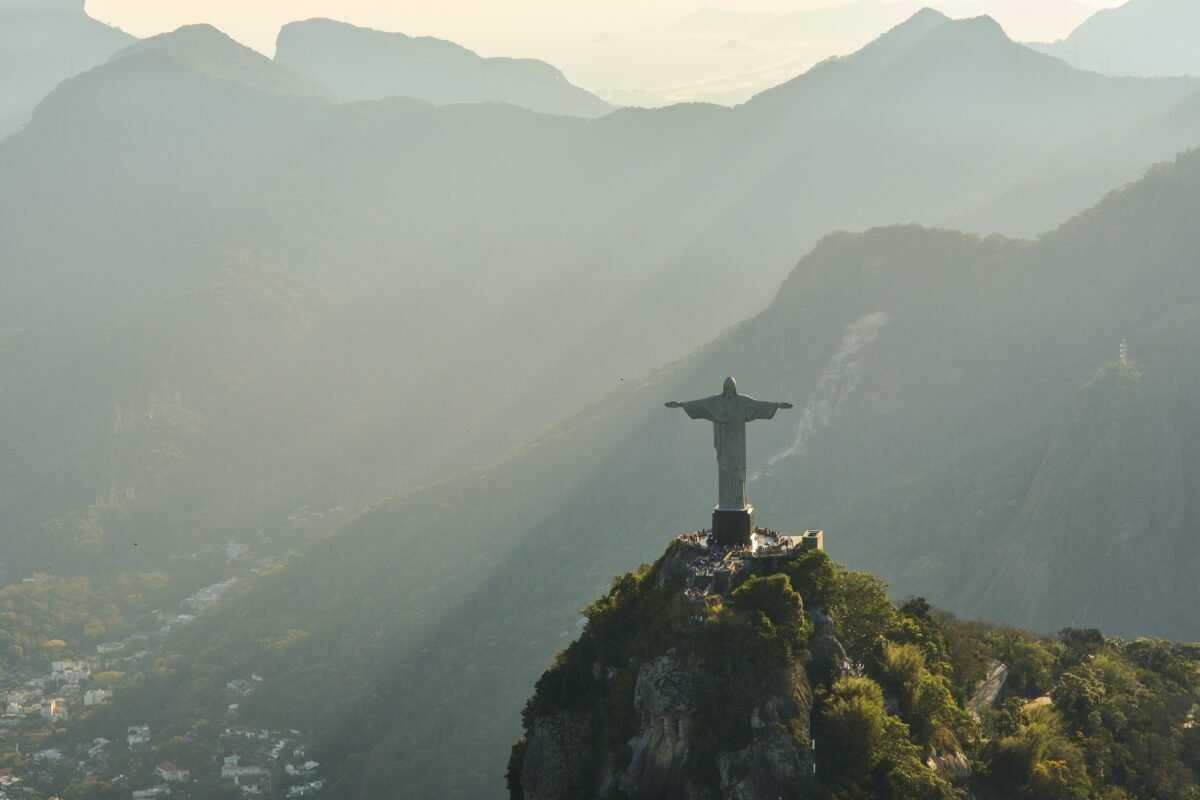
The most obvious must-do is to visit the iconic Christ the Redeemer statue, which is one of the new seven wonders of the world. Try to get there early in the day to take the tram up the mountain before the line gets too long.
Rio is a major city, but it has an abundance of beautiful natural wonders. Be sure to take the cable cars to the top of Sugarloaf Mountain to get a postcard-perfect view of Copacabana, the Christ the Redemer statue, and Guanabara Bay. You’ll also want to spend time on Rio’s world-renowned beaches. Copacabana and Ipanema are the two most popular beaches. Leblon is equally as beautiful but less crowded.
Rio is home to the Parque Nacional da Tijuca, the largest urban rainforest in the world. The park is home to hundreds of plant and animal species that are in danger of extinction and contains around 30 waterfalls. You can also take one of the many hiking trails throughout the park. If you have the time, the Jardin Botanico is worth seeing, too. The gardens include more than 6,500 species from around the world including orchids and cacti.
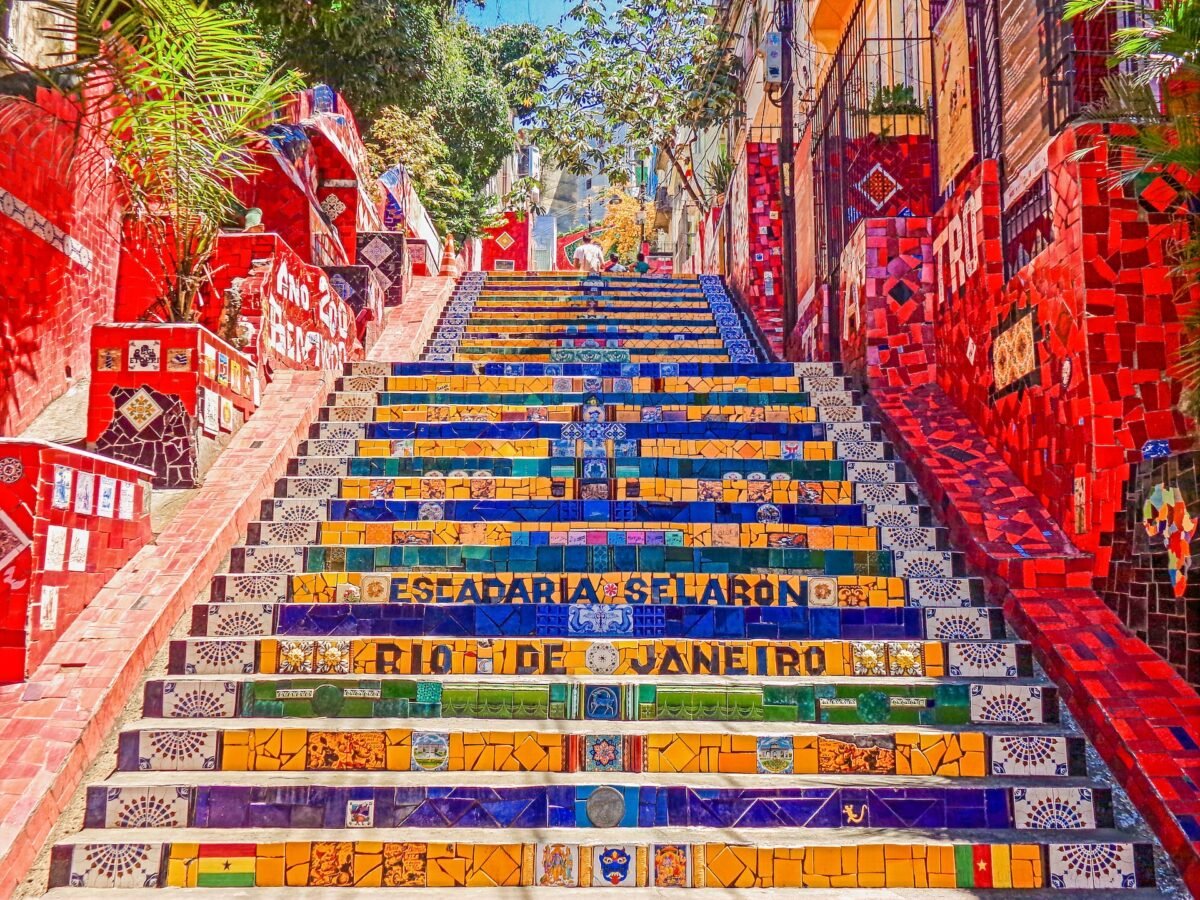
When you’re ready to experience Rio’s nightlife, Lapa is the place to go. While there are bars in other neighborhoods, Lapa has some of the best nightclubs and street parties that last long into the night. To experience traditional Brazilian culture, go to one of the samba houses in Lapa like Carioca da Gema or the Baródromo. During the day in Lapa, you can take photos on the tiled Selarón Steps, visit the Metropolitan Cathedral, and see the Lapa Arches.
Another neighborhood you need to visit is Santa Teresa. While it’s popular with tourists, it’s a little less busy than other hot spots in Rio. The area was home to many artists, musicians, and writers in the 1960s and 1970s, and that atmosphere still exists today. The neighborhood is the perfect place to drink coffee and browse the books at Largo das Letras, visit the Museu Chacara do Ceu, and try out Brazilian feijoada at Bar do Mineiro.
For a tranquil afternoon spend time people-watching at Rodrigo de Freitas Lake. If you’re feeling adventurous, you can book a helicopter tour of Rio or go paragliding
Buenos Aires, Argentina (Days 7-11
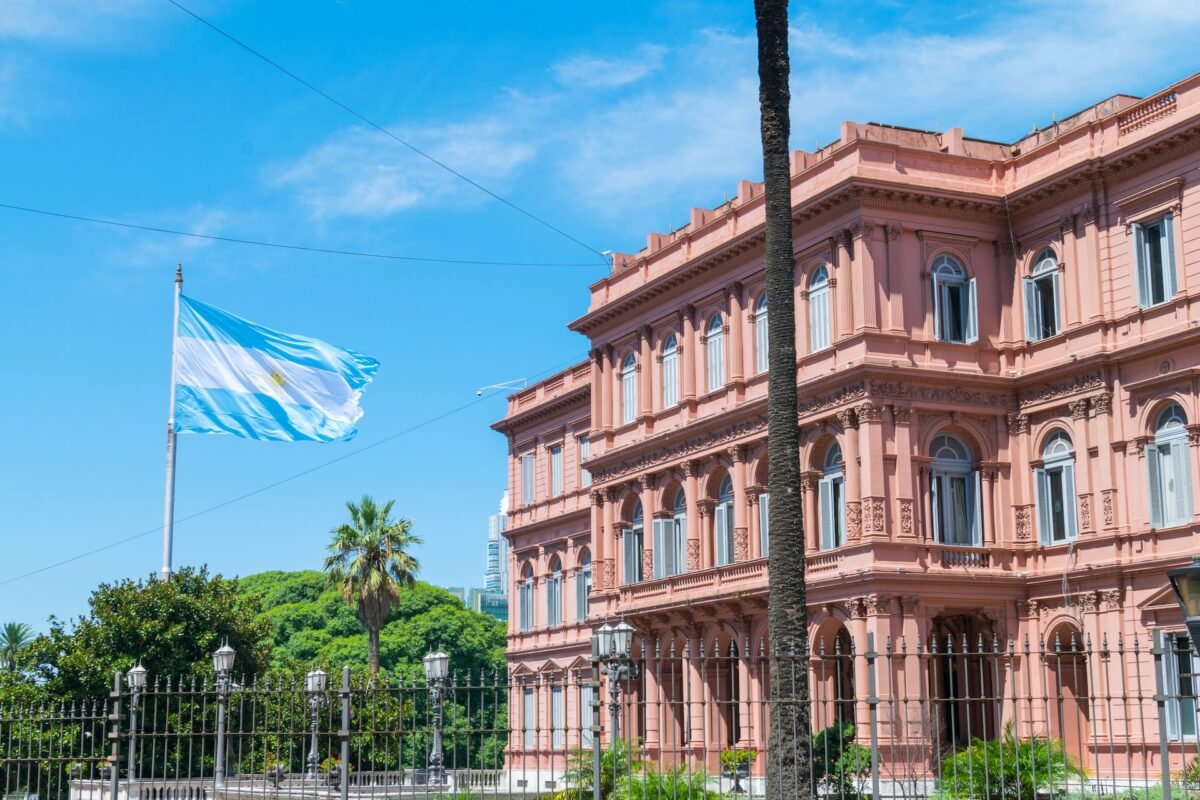
Sometimes called the Paris of South America, Buenos Aires has wide boulevards, cozy cafes, and neo-classical architecture. The beautiful city has a cosmopolitan feeling that pairs perfectly with Argentina’s charm and passion.
Getting to Buenos Aires
On day 7 take a flight from Rio to Buenos Aires. A nonstop flight to Buenos Aires should take between 3 to 4 hours. You’ll most likely arrive at one of the two major airports in the city. Ministro Pistarini International Airport (EZE) is about 20 miles south of the city. Jorge Newberry (AEP) is just north of the city.
Where to Stay in Buenos Aires
Buenos Aires has almost 50 different neighborhoods, but some are a better stay for visitors than others. Palermo is one of the best places for tourists because it’s full of cool coffee shops, great shopping, trendy restaurants, and lots of nightlife. For a more budget option, stay in San Telmo. This area is more historic, and you’ll enjoy the cobblestone streets, art, and antique shops. Another good choice is Recoleta. This neighborhood is near some of Buenos Aires’s best attractions including the National Museum of Fine Arts and Plaza Francia’s weekend market.
What to Do in Buenos Aires
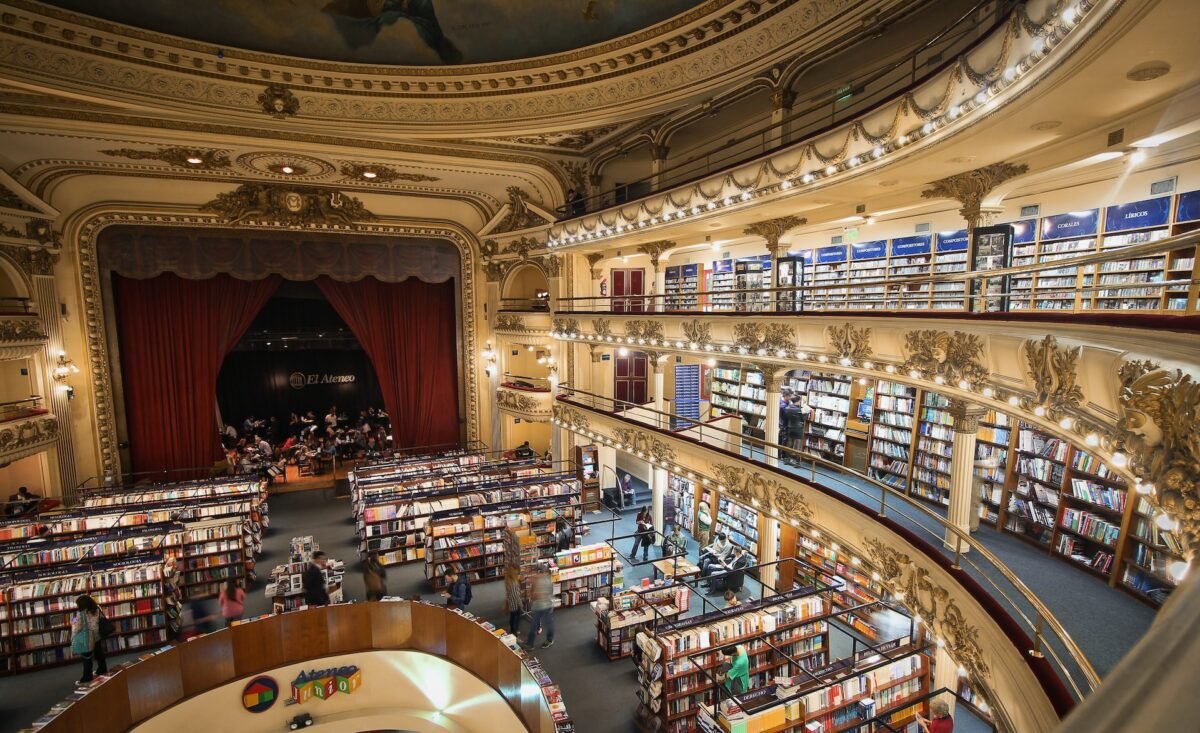
One of the best ways to see Buenos Aires is with a bike tour. You can cover more ground than by walking while still getting to enjoy your surroundings. Both half-day and full-day tours are available. It’s a great way to get oriented to the city, so try to plan a bike tour for your first full day in Buenos Aires. You’ll see sites like the riverside at Costanera Sur, La Boca, the Calle Museo Caminito, and Lezama Park. If you’d rather not ride a bike, a walking tour or hop-on bus are also good options.
Plan to spend at least one day exploring Recoleta, one of the city’s grandest neighborhoods. The area’s biggest draw is the Recoleta Cemetery that’s filled with mausoleums of Argentina’s leaders, writers, Nobel Prize winners, and other well-known figures. You should also stop by the Museo Nacional de Bellas Artes to see works by national artists alongside Rembrandt and Monet. Don’t miss the Libreria El Ateneo Grand Splendid, an opulent theater from the Belle Epoque turned into one of the most beautiful bookstores in the world. A few other popular spots are the Plaza Francia, the Biblioteca Nacional, and the Basilica of Nuestra Senora del Pilar.
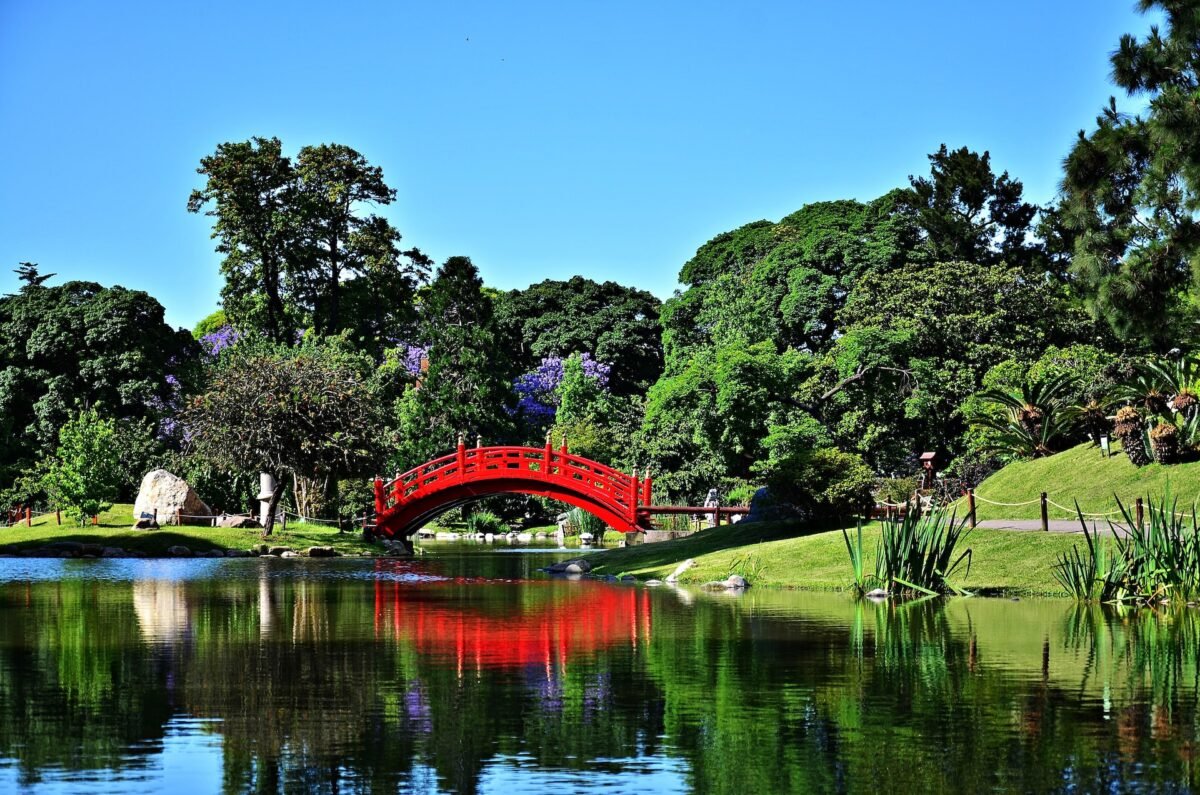
Another neighborhood not to miss is Palermo. This large neighborhood has a contemporary atmosphere and is divided into smaller neighborhoods (sub-barrios). You’ll want to visit the area’s many museums including the Museum of Latin American Art, the Museo Evita, and the National Museum of Decorative Arts. You should also visit one of the area’s parks. The Bosques del Palermo and the Japanese Gardens are both equally beautiful. And, of course, you should spend some time browsing the area’s boutiques and designer shops.
If you’re even somewhat coordinated, sign up for a tango lesson. There are classes for every level including beginners. At the very least, see a tango show one evening. You’ll find some performances staged in restaurants, and you can buy tickets for shows at places like Cafe Tortoni. If you’d rather see a different kind of passionate show, get tickets to a football match. Prepare for lots of noise and hopefully lots of celebrating.
As far as cuisine goes, try one of Argentina’s world-famous steaks. Look for a steakhouse filled with locals, and you’ll get to taste a steak better than you can find anywhere else outside of Argentina. You should also sample Asado, Argentina’s national dish made from a variety of meat cuts barbecued for several hours. For another Argentinian specialty, go on a wine-tasting tour to try some of the finest glasses of red wine in the world.
Day Trips from Buenos Aires (Days 12-13)

Since Buenos Aires is extremely popular with visitors, it’s nice to take a day trip or two to get away from the crowds and see a different side of Argentina.
Visit Tigre, a small town that’s only about 20 miles from Buenos Aires. You can spend time on a cruise through the waterways or go kayaking. The town has an art museum and a market at the Puerto de Frutos where you can pick up a few souvenirs. Tigre is a nice, relaxing getaway after being in a busy city for several days.
Book a trip to a nearby ranch during your time in Buenos Aires. There are multiple ranches near the city, and you can even book a visit to a ranch that will pick you up from your hotel. You’ll spend the day riding houses, eating empanadas, and enjoying real Argentine Asado.
Lima, Peru (Days 14-18)
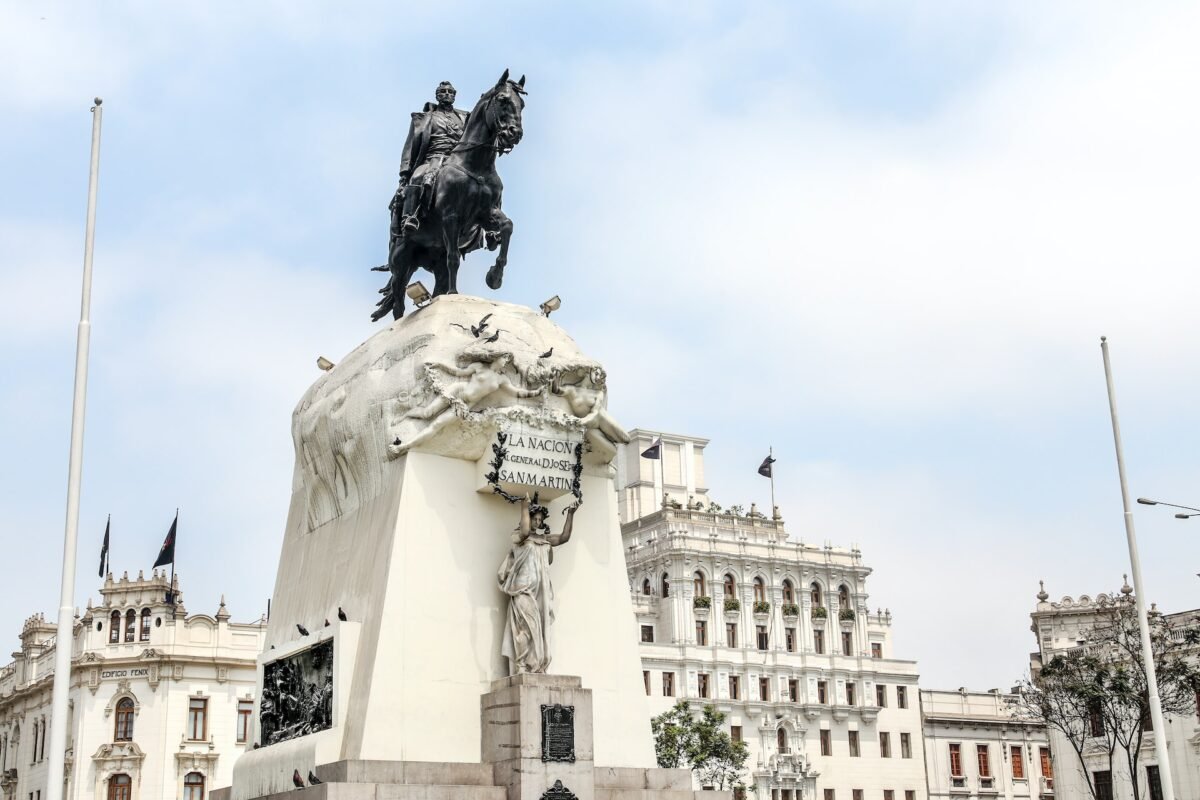
Peru’s capital city is located on the sea and has a growing reputation as the culinary capital of South America. While in Lima, make sure to try ceviche, a specialty that the city has perfected thanks to its supply of fresh fish.
Getting to Lima
On day 14, fly into Lima (Jorge Chavez International Airport) from Buenos Aires. A nonstop flight will take around 5 hours.
Where to Stay in Lima
Plan to stay in Miraflores. It’s a beautiful neighborhood bordering the Pacific Ocean with a range of accommodations from budget to upscale. Within Miraflores, you’ll find well-maintained parks, excellent restaurants, and plenty of shops.
What to Do in Lima

Within Miraflores, you’ll find well-maintained parks, excellent restaurants, and plenty of shops. Make sure to see the Faro de la Marina. The historic lighthouse overlooking the sea was built in 1900.
The Larcomar Shopping Center is a good place to browse through shops and stop for a bite to eat. It is a shopping mall, but you’ll find local restaurants and romantic seafront views among the more commercialized offerings. If you’d rather just see beautiful views, visit Parque del Amor overlooking Lima’s cliffs at sunset. For those who are especially adventurous, paragliding over the cliffs is also a popular activity.
Make time to explore the city’s historic centre. Here you’ll find the oldest buildings in the city and learn about Lima’s colonial past. Visit the Plaza de Armas de Lima where the city was founded. The plaza is surrounded by buildings with distinct colonial-style wooden balconies.
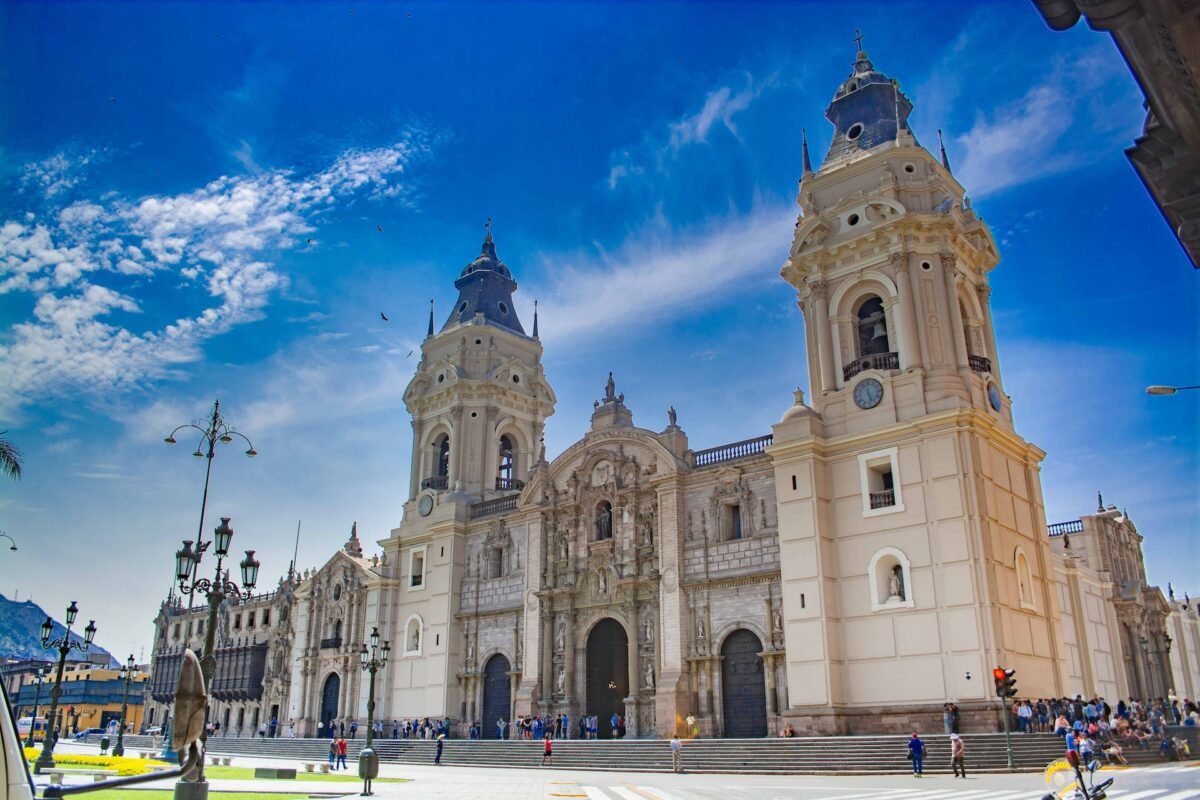
Two sites especially worth visiting are the Lima Cathedral, where you’ll find the tomb of Francisco Pizarro who founded Lima, and the San Francisco convent, where you can see the catacombs inside. While in the area, visit the Parque de la Reserva, created to honor Peruvians who died in the War of the Pacific. Each afternoon, visitors gather to watch the Circuito Mágico del Agua, a spectacular water display involving 13 different fountains.
On your last day in Lima, spend time in Barranco. It’s a colorful neighborhood connected to Miraflores by a boardwalk. Barranco is more laid-back than Miraflores, and you’ll enjoy seeing the unique art-deco architectural style of the buildings.
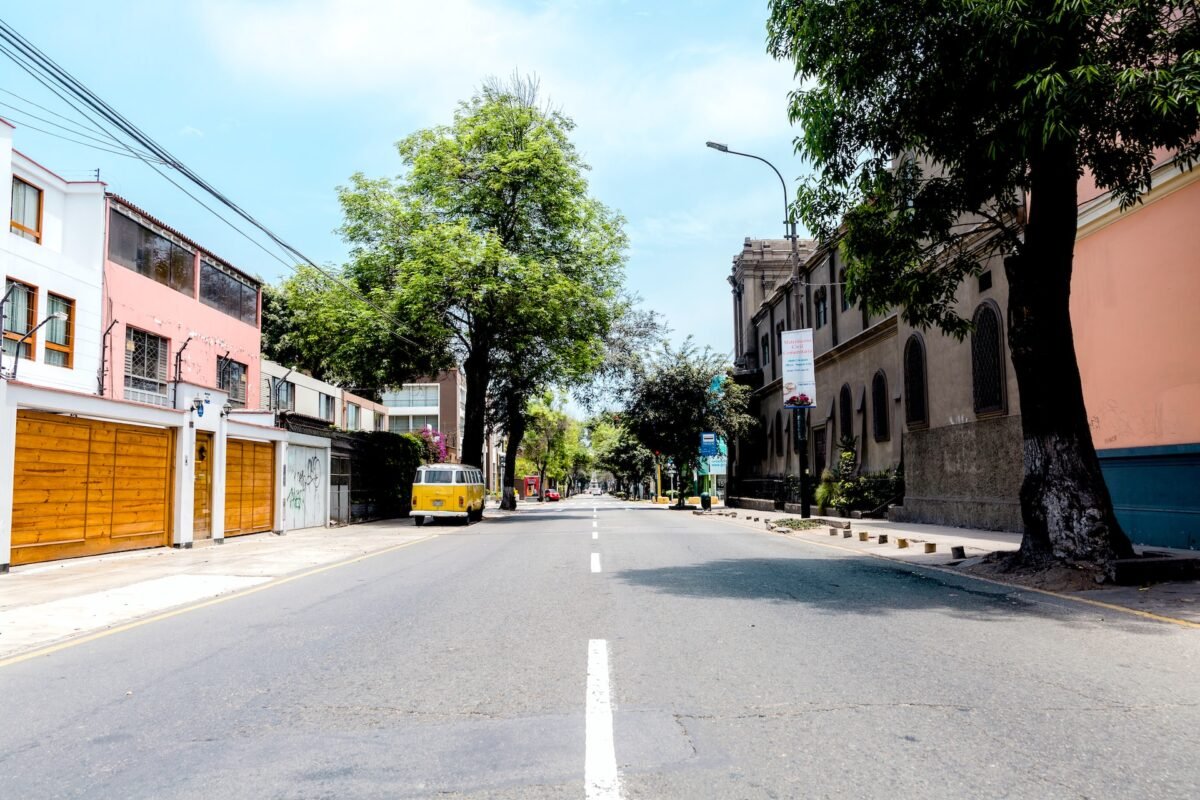
The Plaza de Armas of Barranco frequently hosts live music, artisan fairs, art displays, and other events. Other attractions worth visiting are the baroque-style Cathedral of Barranco, the Barranco Hermite, and the Puente de Los Suspiros (Bridge of Sighs) where your wish will come true if you walk across the bridge without taking a breath.
One of the best things to do in Barranco visits the museums. The Mario Testing Gallery (MATE) holds the work of iconic Peruvian photographer Mario Testino who has photographed everyone from Kate Moss and Giselle Bündchen to Princess Diana. Next to the MATE Gallery is the Pedro de Osma Museum to see an art collection from the 15th to 18th centuries. You can also visit the MAC Museum of Contemporary Art with works by Latin American and European artists from the 1950s.
Cusco, Peru (Days 19-23)

No visit to Peru is complete without visiting the former Inca capital Cusco. The charming city has historic architecture, museums, cafes, and restaurants along its cobblestone streets. It’s also the perfect base for visiting Machu Picchu and the Sacred Valley.
Getting to Cusco
On day 19, travel from Lima to Cusco. It’s possible to travel by plane in less than 2 hours. You can travel by bus instead if you’d rather. The advantage of taking the bus is that you’ll get to see the countryside, save money, and possibly have fewer issues with altitude sickness. (Cusco is over 11,000 feet above sea level). The downside of traveling by bus is that it takes over 20 hours.
Some tour companies will transport you from Lima to Cusco making stops along the way. These tours are a great way to get used to the altitude change and see more of Peru without feeling stuck on a bus for the entire day. If you can find one that stops in Ica and takes you to visit the local wineries and sample Pisco, traveling by bus seems much more attractive.
Where to Stay in Cusco

Cusco is a large city with many distinct neighborhoods. Staying in the Historic Center puts you near many of the city’s monuments and landmarks. It’s definitely a touristy area, but it’s a great base for exploring. Stay near the Plaza de Armas if you want to be near the nightlife. Or, if you’re looking for a more residential feel, stay in San Blas, also known as “The Balcony.”
Things to Do in Cusco
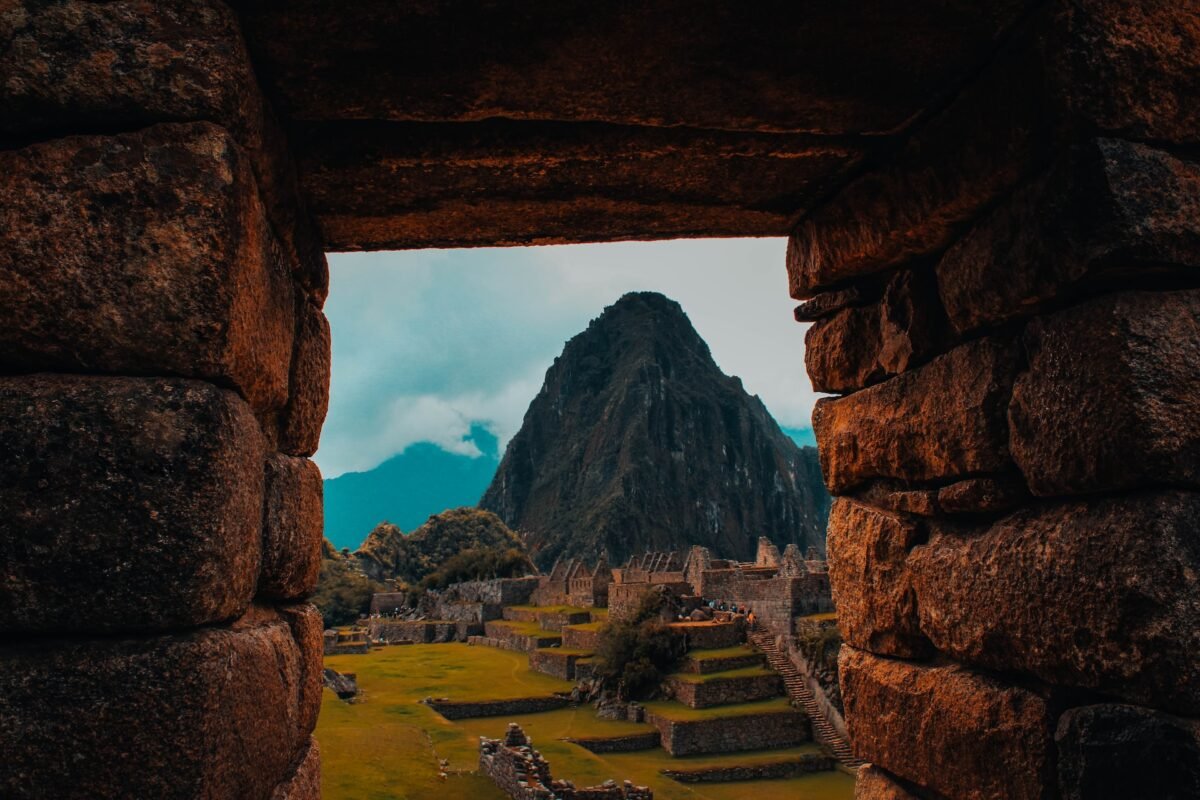
If you’re in Cusco, you need to visit Machu Picchu. The Inca Citadel is one of the new seven wonders of the world. The fortress was forgotten for centuries until 1911 and is one of the most well-preserved Inca ruins in existence today. You can go individually, but you’ll still need to hire a local guide once you get to the citadel. It’s worth booking a tour for less hassle and a richer experience. Either way, make sure to get your tickets well in advance.
While taking a trip from Cusco to Machu Picchu is one of the biggest highlights, you’ll want to spend time exploring Cusco as well. The Plaza de Armas is one of Cusco’s top tourist attractions. Nearby, you’ll also find the San Pedro Market. It’s one of the busiest markets in Cusco selling everything from souvenirs to fruits and vegetables.
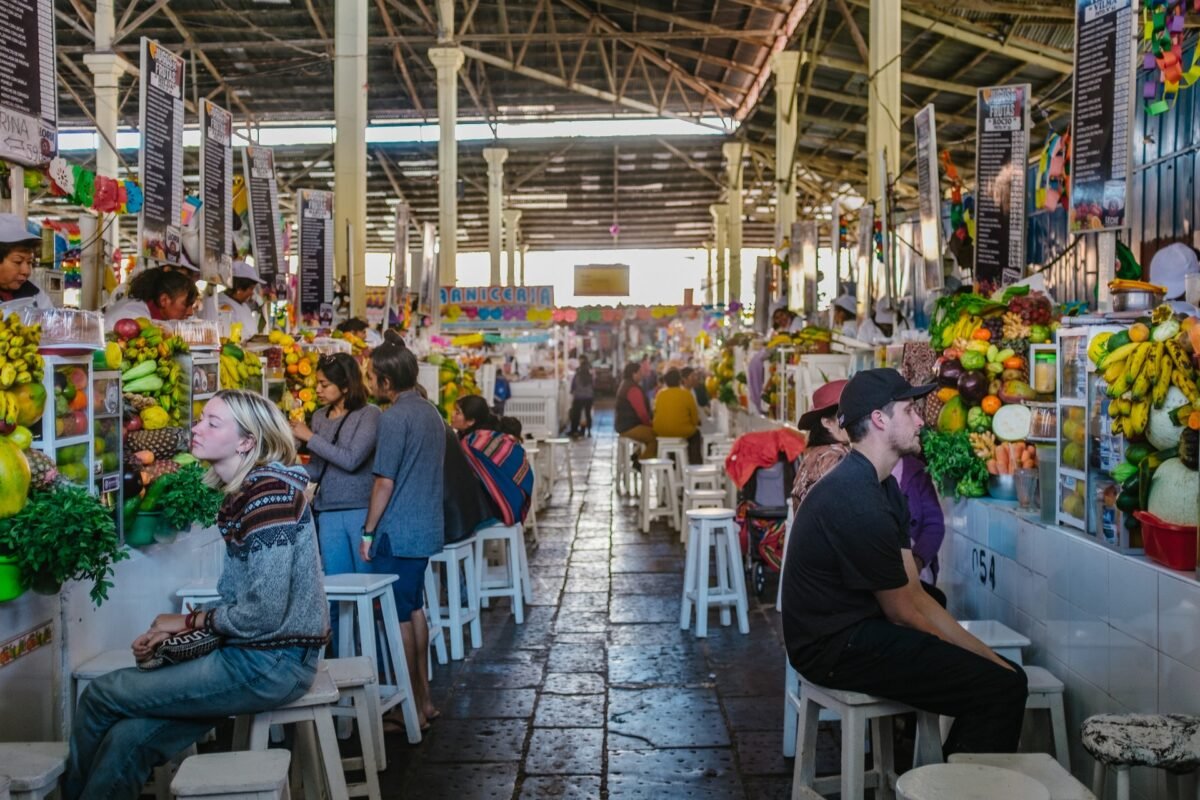
For more historic ruins, head to the outskirts of the city to Sacsayhuaman, a large archeological park near the outskirts of the city. Two other landmarks to visit are the Cathedral of Cusco and the Coricancha Temple.
If you have the chance, head to the Cusco Planetarium at night to learn more about Inca astronomy as well as stargazing and the constellations.
Cusco has plenty of culinary options. You’ll find plenty of street food as well as tiny local restaurants and more extravagant places. For street food, try some of the stalls near Plaza de Armas. For a more local restaurant (a picantería), try Jardín Cusqueño, serving Peruvian highland staples. For an upscale, and somewhat pricier experience, try Museo del Pisco and enjoy classic Pisco along with more adventurous options.
Medellín, Colombia (Days 24-28)

The capital of Colombia’s Antioquia region, Medellín is located right in the middle of the country. It’s one of Colombia’s most popular tourist destinations thanks to its colorful urban culture mixed with great access to outdoor spaces.
Getting to Medellín
You’ll most likely need to fly back to Lima from Cusco in order to fly into Medellín. This will take most of day 24. The two airports in Medellín are Jose Maria Cordoba Airport (MDE) about 20 miles outside of the city and Enrique Olaya Herrera Airport (EOH) located closer to Medellín, but used more often for domestic flights.
Where to Stay in Medellín
El Poblado is considered the tourist hub in Medellín. It’s centrally located and has well-connected public transportation to the rest of the city. The area offers a lot in terms of nightlife and live music venues. If you’d rather be in an area that’s more residential, try Laureles. It takes a bit longer to get to public transportation from Laureles, but there are still great restaurants to enjoy in the area.
What to Do in Medellín’

Regardless of whether you decide to stay in El Poblado, the area is worth exploring. It’s a gorgeous neighborhood filled with greenery. There’s even a river running through. Stroll through the streets stopping at the local markets, boutiques, and cafes that catch your eye.
Be sure to visit Medellín’s most picturesque square Plaza Botero. You can admire the statues by Fernando Botero scattered around the square. The Antioquia Museum and the Rafael Uribe Uribe Palace of Culture are also located at Plaza Botero.
Medellín has incredible city parks. Two of the best parks to visit are Parque Lleras and Parque Arvi. You’ll need to take cable cars to get to Parque Arvi, which is an experience in itself. The Jardin Botanico is also worth visiting as well.
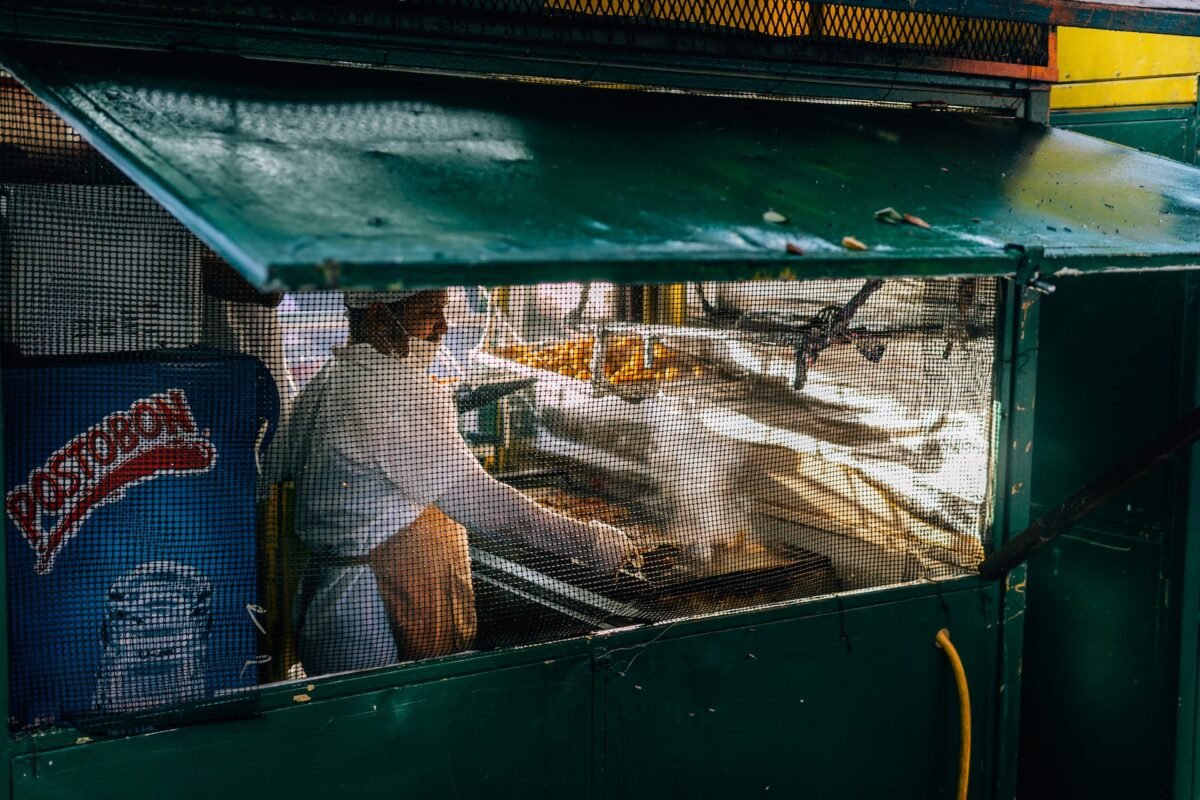
At lunch between 12 pm and 3 pm, look for the menu del dia lunch specials. These are low-priced combos with soup, a main course, a drink, and sometimes a dessert. Then, you can splurge a little and go somewhere like Alambique, a slow food restaurant with one of the city’s best rooftop bars, for dinner.
Plan for at least one day trips from Medellín to another place in Antioquia. Jericó is a small town in the region where you can step away from the city and enjoy the authentic, rural culture. The town is surrounded by family-owned coffee farms, and the town itself is inhabited by a large number of artisans creating beautiful paintings, crafts, and music. It’s a 3.5-hour bus ride from Medellín, but worth the time it takes to get there.
For a day trip closer to Medellín, head just 25 minutes outside of the city to take the Arenales Waterfall Hike. You’ll benefit from having a guide because even though the trail isn’t too difficult, it isn’t well marked.
Final Thoughts
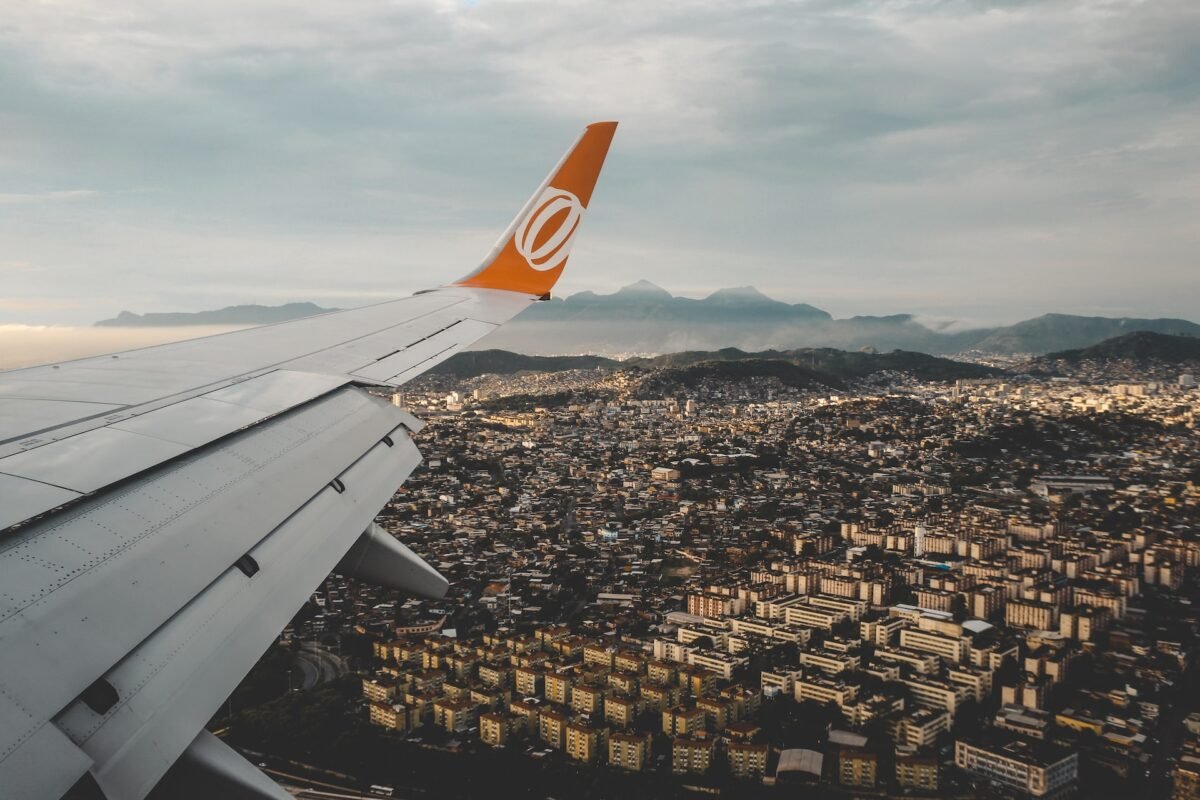
Even after spending a month in South America, you’ll have barely seen a fraction of what the continent has to offer. But, you will have enjoyed several of its best cities and tourist attractions.
After getting a taste of traveling around South America, you’ll be ready to go back as soon as possible. See the rest of our guides for South America to start planning your next trip already.







